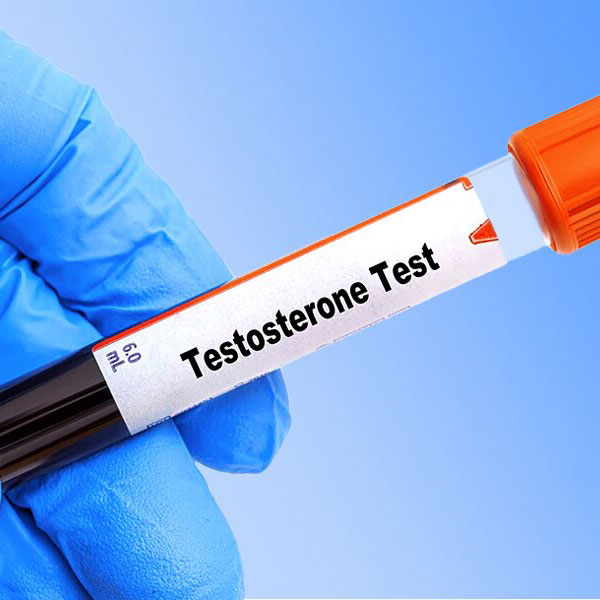The Essential Testosterone Test Guide: What Every Man Needs to Know
Many health-related discussions involving men are dominated by testosterone (T). Androgens (male sex-hormones) are vital for the development of masculine characteristics such as the testes and sperm counts, or the deepening of the voice. The additional role it plays in muscle mass and bone health, as well as sex desire and other body functions, is why men and women need different levels. A man can reduce the risk of developing health issues by knowing his level of testosterone.
[ruby_related heading=”More Read” total=3 layout=1 offset=5]
Many men are unaware of the following facts
The body’s testosterone levels can change from the womb until the grave. There are many reasons for this. According to the American Urological Association, low testosterone in men begins at 300ng/dL. The normal testosterone levels for adult men are between 300 and 1,000 ng/dL. Many men don’t know where to start when it comes to their testosterone levels, despite how important this number is.
Understanding testosterone levels
The testosterone level is highest in a boy’s teenage and early adulthood. Consider that puberty is a time of maturation for his voice, sperm, testes and muscle mass. As the male adult reaches his late twenties, testosterone levels start to naturally decline. can also be affected by other factors.
Low T can cause a variety of symptoms. Some of the symptoms include decreased sex desire, muscle mass and confidence, as well as a decrease in mental focus. Other symptoms include increased fat, gynecomastia, hot flashes and mood swings. Low T can be accompanied by increased estrogen in men. However, this isn’t always the case.
Tests for testosterone are available in different types
The most common way to test testosterone levels is through saliva or urine. Despite the fact that there are many ways to measure testosterone, research has shown that the test of blood serum is most accurate.
In a medical clinic, blood serum testosterone tests can be ordered and administered. A sterile needle is used to draw blood from a vein inside the elbow. The sample is sent to a laboratory for analysis.
There are also at-home tests for saliva, urine and blood obtained by finger prick. These can be more convenient and provide a way to measure testosterone levels. These tests are less reliable and can give faulty results when done incorrectly. To learn about the best way to determine their T levels, men should consult a medical professional.
How to prepare for the testosterone test
Before you do a testosterone test, here are some things to consider:
- Know the costs of testosterone testing. It is easy to prepare for a test. It is crucial to first know the cost of the test. Most often, the test is paid for out of pocket. The test may be covered in full or at a certain percentage by the insurance company, depending on the plan of the individual.
- List all medications and supplements that you take. Some medications and supplements can interfere with the results of a testosterone test. Statins, beta blockers, opioids and other medications can affect testosterone levels. Before undergoing a testosterone screening, it is important that you inform your doctor of any supplements or medications you are currently taking. Biotin is a very important supplement. It can cause false lows or highs in testosterone tests. You may be asked to stop taking this supplement, or any other supplement that contains biotin, for at least one week before your testosterone test.
- The night before the test and the day of the test, refrain from eating or drinking anything. A man is advised to undergo a testosterone screening after a night of fasting from all food and drinks other than water. This is not required all the time. According to research, the best time for men to test their testosterone is between 7-10 am in the morning. This is the time when testosterone levels are at their highest. The results will be most accurate and can help a doctor determine what treatment to give.
Testosterone testing in women
The role of testosterone in men and women is similar. In women, it is important for bone health, libido and red blood cell production. The reference range of testosterone for men is 300-1,001 ng/dL. For women it is 15-70.
Women with elevated testosterone levels may experience irregular periods, excessive body hair, or even infertility. High testosterone levels are also linked to other conditions, such as polycystic Ovarian Syndrome (PCOS). A healthcare provider will order a test to determine if a woman has any of these symptoms or complications and can then advise her on the best treatment options.
Testosterone results: How to interpret them
When interpreting the results of testosterone tests, there are several factors to take into consideration. These results can give a doctor insight into the risks and possible treatment options for low or high testosterone levels. Men should not interpret results on their own. To interpret lab tests, men should consult a doctor.
Different tests can be used to inform your doctor about the status of your testosterone. On the testosterone tests, there are also reference ranges. These ranges are normal levels and inform the provider whether test values are high, normal or low. If your levels fall outside these reference ranges the provider may suggest certain medications or lifestyle changes.
- Total Testosteronerepresents a combination of all-bound and free testosterone. Bound testosterone is testosterone bound to albumin, or to sex hormone binding globulin. About 44% of the total testosterone in a man is bound to SHBG. SHBG’s main purpose is to regulate the amount of available testosterone in the blood. SHBG stops too much testosterone being available.
- Free Testosterone is 1-3% of total testosterone in the body of a man. This type of testosterone is not bound to a protein and can be applied in different areas of the body for different purposes. These functions include helping to regulate the metabolism, muscle protein syntheses, sexual/reproductive functions, and other important cell functions.
- Bioavailable testosterone. Albumin is responsible for another 50% of the total testosterone in a man. The weakly-bound albumin testosterone can be released and perform its functions depending on the physiological condition. It is readily accessible to the body and thus called bioavailable testosterone.
It is important to work with your healthcare provider. The total testosterone level may be high, but the free testosterone or bound testosterone levels are low. The healthcare provider will address these concerns and offer a plan to balance testosterone levels in order to achieve optimal health.
Next Steps
You may want to consider a testosterone screening if you experience symptoms such as low sexual drive, low testosterone, low muscle mass, fatigue and low self-confidence. Many men don’t even know their testosterone levels or how to check them. Men should have their levels checked every year, unless they are advised otherwise by a physician. If this is the case, additional or less frequent tests may be advised depending on an individual’s health history and risk factors.
Ask your doctor about the options available to you if you’re unsure how to check your testosterone levels. You can reduce your risk of developing chronic diseases and other health issues that are caused by low or high testosterone levels.
The FAQ
What is a test for testosterone and why is it so important?
The blood test for testosterone is an easy way to find out how much testosterone is in your body (total, bioavailable, and free). Your testosterone levels will help you determine whether your levels are high or low.
How can I prepare myself for a testosterone screening?
Costs are important to know. Fasting and only drinking water prior to your test are also recommended for best results. Also, testing should be done in the morning between 7-10 am. These are not required in all cases.
What are the risks of testosterone testing?
The health and safety of a person is not at risk when a doctor or medical office performs a testosterone test. Tests performed at home without medical supervision can be dangerous to your safety and health.
Takeaways:
- Testing your testosterone levels is an easy and reliable way to learn about your hormone health. Testosterone levels can be measured annually by men to determine their health risks.
- The levels and needs of testosterone change as men and women age. Blood tests are the most accurate and reliable way to test for total, bioavailable, and free testosterone.
- It is important to work with a healthcare professional to assess your testosterone levels, and make informed decisions about any issues that may arise.
Source:
- American Urological Association. Evaluation and management of testosterone deficiency (2018).
- The Journal of Urology (AUA). What is a normal testosterone level for young men? Rethinking the 300 ng/dL cutoff for testosterone deficiency in men 20-44 years old.
- Biology of Reproduction. Diverse roles for sex hormone-binding globulin in reproduction.
- Canadian Family Physician. Biotin interference.





